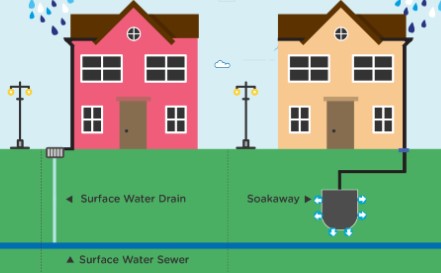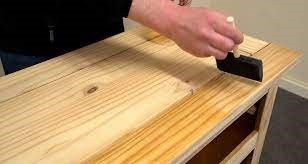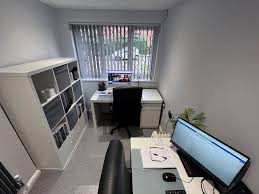Surface water is rainwater that runs off roofs and down gutters. To prevent flooding, drainage systems collect the surface water and transport it away from your property. This can be done through soakaways, which absorb the water into the ground, or directly into public sewers.
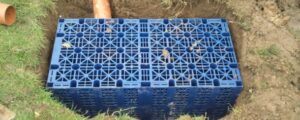
Where does your surface water drain to?
It is easy to locate your surface water drains by following your drains, gutters and downpipes to their outlet. Underwater drainage systems can be located by asking a professional plumber; alternatively, if a property survey was carried out, the location of the underwater drainage systems will be included.
Who is responsible for surface water drainage in the UK?
In the UK, the responsibility for surface water drainage falls is down to the homeowner. This means the homeowner is responsible for maintaining the drains within the property boundary, ensuring they are clear of blockages and run smoothly.
Drainage issues
If the water is not draining away correctly, this could indicate a problem with the drains and a professional company should be contacted to investigate. More information can be obtained from companies such as www.wilkinson-env.co.uk/sewer-repairs-drain-lining-concrete-cutting/drain-repairs/drain-repairs-solihull..
If it is deemed that the drains need replacing, the company will be able to advise on the best course of action, such as sewer pipe lining Solihull.
Can rainwater go into the sewer network?
Rainwater should not be directed into the sewer system, as it can increase the risk of flooding; instead, green infrastructure should be integrated into property development.
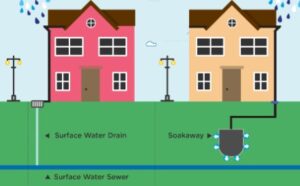
Differences between surface and foul water
Surface water is rainwater. Foul water is classified as wastewater from toilets, sinks and household appliances, such as dishwashers and washing machines. The two systems should not be connected, as foul water can contaminate the sewerage network.

